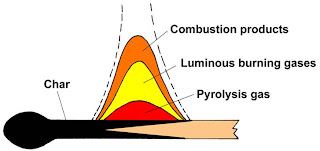“One of the most exciting strategies for restoring carbon to depleted soils, and sequestering significant amounts of CO2 for 1000 years or more, is the use of biochar”
(Al Gore)
What is biochar???
“The porous carbonaceous solid produced by thermochemical conversion of organic materials in an oxygen depleted atmosphere which has physiochemical properties suitable for the safe and long term storage of carbon in the environment and potentially, soil improvement” (Shackley & Sohi 2010)
“The result of heating biomass (including wood and agricultural residues) in a zero to low oxygen environment to produce a charcoal type material, which can be used as a soil amendment“ (Prof Peter Read at Massey University)
“Charcoal created by pyrolysis of biomass, and differs from charcoal only in the sense that its primary use is not for fuel, but for biosequestration or atmospheric carbon capture and storage” (wikipedia.com)
Biochar?? YES!!
“…perhaps the only tool we had to bring carbon dioxide back to pre-industrial levels was to let the biosphere pump it from the air for us. It currently removes 550bn tons a year, about 18 times more than we emit, but 99.9% of the carbon captured this way goes back to the air as CO2 when things are eaten. What we have to do is turn a portion of all the waste of agriculture into charcoal and bury it.”
(The Guardian 2009)
Biochar?!! NO!
—“What happens will very much depend on what type of soil you are dealing with. No one can yet say ‘biochar will do this.’ We just don’t know – there will be huge variety…Given this uncertainty, what worries us is the idea that (biochar) is being recommended to farmers in Africa and Asia…we haven’t seen anything that shows that these biochar stoves are at a technical stage where they can’t be rolled out”
(CNN 2010)
—“None of this is to suggest that the idea has no virtues, simply that they are outweighed by hazards, which the promoters have overlooked or obscured.”
(The Guardian 2009)
How is biochar produced? Thermal decomposition:
1. Pyrolysis
use kilns and retorts and other specialized equipment to contain the baking biomass while excluding oxygen. Fast pyrolysis tends to produce more oils and liquids while slow pyrolysis produces more syngas.
Typical products yields (dry basis) for different modes of pyrolysis
2. Gasification produce smaller quantities of biochar in a directly-heated reaction vessel with introduced air. The more oxygen a production unit can exclude, the more biochar it can produce.
3. Hydrothermal carbonization






No comments:
Post a Comment